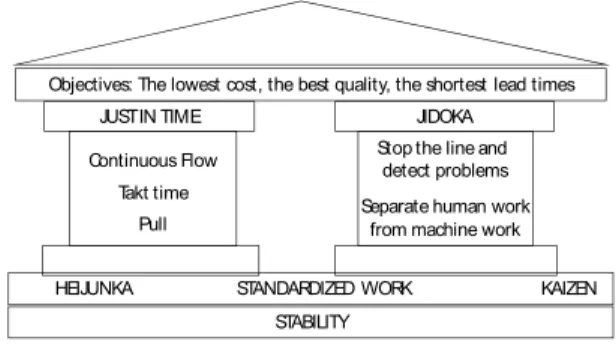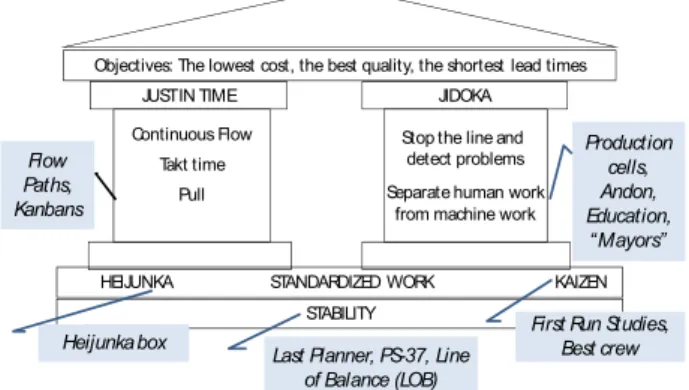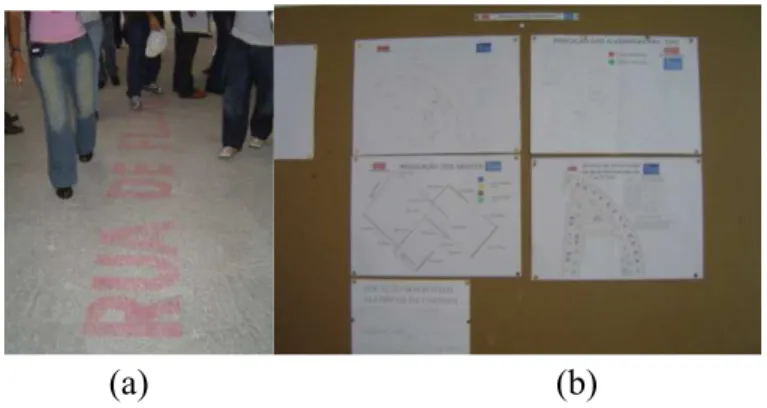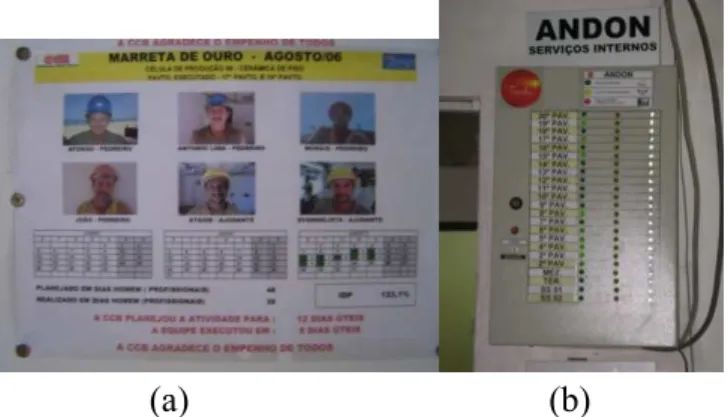Thaís da C. L. Alves , José de P. Barros Neto , Luis F. M. Heineck , Sergio L. Kemmer4 and Pedro E. Pereira5
ABSTRACT
The implementation of Lean Construction concepts, principles, and tools requires that different professionals be engaged in the process so that success is achieved. Also different initiatives have to be put into practice to keep the project’s participants motivated during the change from traditional production planning and control methods to the ones proposed by Lean Construction. Before the change to a Lean system can take place, traditional models have to be challenged and the gains related to the use of Lean concepts and principles have to be visible to everyone. Managers have to be creative and devise ways to educate project participants about Lean concepts and principles and to inform collaborators about the rewards that will result from the Lean implementation. This paper presents a study carried out in multiple construction sites in the city of Fortaleza, Brazil to identify different types of incentives and innovative methods put in place to motivate and engage participants of construction projects that have been implementing Lean. The authors have found that construction companies have put in place incentive systems and low-cost innovative methods based on classic theories of motivation combined with Lean concepts and tools, i.e., autonomation (jidoka), production leveling (heijunka), and kanban.
KEY WORDS
Innovation, incentives, lean construction, strategy.
INTRODUCTION
Papers published in previous IGLC conferences have addressed different facets of construction innovation. Mitropoulos and Howell (2001) presented a model to depict the dynamics of “Performance Improvement programs and Lean Construction”. They discussed a model based on causal loop diagrams which represented the relationships between key factors that combined would result in operational improvement, i.e., time spent on improvement, performance improvement skills and mechanisms, and perspective and goals. Mitropoulos and Howell (2001, p.9-10) highlighted that “the direction of improvement effort is strongly influenced by the structure and goals [of
1
Assistant Professor, Structural Engineering and Construction Department, Federal University of Ceará, Campus do Pici, s/n, Bloco 710, Pici, CEP: 60455-760, Fortaleza, CE, Brazil, thaiscla@ufc.br
2
Professor, Structural Engineering and Construction Department, Federal University of Ceará, Campus do Pici, s/n, Bloco 710, Pici, CEP: 60455-760, Fortaleza, CE, Brazil, jpbarros@ufc.br
3
Professor, Department of Mechanical Production Engineering, Federal University of Ceará, Fortaleza -CE, Brazil
4
Construction Manager, Construtora C. Rolim Engenharia Ltda., Fortaleza-CE, Brazil, sergio@crolim.com.br
5
the organization], and (...) result-focused programs have limited ability to address complex system problems” commonly found in construction projects.
Along the same lines, Henrich et al. (2006) have explained two major groups of drivers for construction innovation, i.e., push and pull. A push-driven innovation is triggered by forces external to an organization, e.g., customers, suppliers, and regulators. A pull-driven innovation starts from within an organization which perceives a performance gap in its operations and works to close the gap. In order to close the gap, managers should be willing to search for new technologies and innovations from other industries and use them in unintended ways (Tatum 1987).
Benchmarking other companies and industries is also one way to pull innovations. However, Lillrank (1995) emphasizes the need to adapt theories, concepts, and tools to local contexts and needs. In other words, the concepts have to be abstracted from their original application and the tacit knowledge embedded in them translated from one context to the next. Tools can be more easily transferred between different contexts (low level of abstraction) whereas concepts and tacit knowledge related to practices and expected behaviours (high levels of abstraction) require more effort to be adapted.
This paper focuses on presenting simple low-level of abstraction innovations commonly found in construction sites that are implementing Lean concepts, principles and tools in the city of Fortaleza, North-eastern Brazil. The authors aim at contributing to the discussion on innovations and performance improvement brought to the construction industry by the implementation of Lean in construction.
INNOVATION IN CONSTRUCTION
The construction industry is fragmented, with a high number of small companies which are more prone to be affected by variations in the economy; therefore most companies do not have spare resources to invest in innovation (Tatum 1986; Slaughter 1993). Notwithstanding this situation, the industry presents high levels of innovation at its construction sites when compared to manufacturers that provide products and services to the industry. Slaughter (1993) highlights that people at construction sites tend to be more innovative because they work under pressure and need to solve problems in a time- and cost-effective fashion. They are also in a better position to innovate because workers and contractors have a deeper understanding of the activities they carry out in a daily basis.
characteristics, the innovation in construction is also marked by low levels of patents due to several reasons. Tatum (1986, p.184) points out that:
“The nature of construction, with strong emphasis on process rather than hardware, limits barriers to imitation. New process elements of technologies can spread rapidly without patent restraints. This allows adoption and incremental improvement. It may also discourage innovation.”
In addition to the low barriers to imitation, Tatum (1986, p.184) points out factors that serve as advantages for construction innovation including (but not limited to):
• Project organization: the project teams can be viewed as “skunk work” organizations that have autonomy to innovate. Also, innovative organizations tend to have more flexible structures that allows for more interaction among team members and experimentation (Tatum 1987). However, it must be noted that too much change in project teams tend to make it difficult to create a culture prone to innovation.
• Capability and experience of personnel: companies have people that are very knowledgeable about the daily activities they develop at the site. • Variation in methods: “The work operations of construction present
inherent flexibility for improvement. Production processes do not create rigid restraints, as in manufacturing.”
THE HOUSE OF TOYOTA
The implementation of the Lean philosophy in the construction industry can be considered not only a managerial innovation but also a change in the way the industry operates. Thus, organizational (tacit and tangible) factors related to the implementation of Lean in construction have to be addressed.
According to Womack and Jones (1998, p.284) Lean should be first implemented in activities that are “important and visible” so that gains and pains are visible to the organization. In addition to making Lean implementation visible, there should be a strong concern regarding the correct understanding and interpretation of Lean basics. The “House of Toyota” presents how different concepts of a Lean System, as developed by Toyota, are intertwined (LEI 2003). The translation of concepts into a house is well-suited to the construction industry as it represents abstract concepts in a shape/form well-known by the industry.
STABILITY
HEIJUNKA STANDARDIZED WORK KAIZEN Continuous Flow
Takt time Pull
Stop the line and detect problems
Separate human work from machine work
JIDOKA JUST IN TIME
Objectives: The lowest cost, the best quality, the shortest lead times
Figure 1: The House of Toyota (LEI 2003)
Amongst the Lean concepts that support the objectives indicated in the House, transparency, e.g., visual management, is one of the most important as it allows the system to communicate with its workers and managers enhancing their ability to detect problems and correct them before they halt the system contributing to a continuous flow of work (Koskela 1992). Transparency promotes autonomation as it empowers workers to distinguish right and wrong, and quickly make decisions because information is available. For that reason, every effort should be made to enhance the system’s ability to communicate with managers and workers. It is worth noting that the initiatives related to visual management are usually inexpensive and provide a good basis to communicate decisions related to a production system design and its indicators.
RESEARCH METHOD
The method used to develop this research is based on two main sources of data, i.e., field visits by the authors and data collection by undergraduate and graduate students that have taken classes with one of the authors. In this paper, the concept of innovation is related to any practice that is new to an organization, even if the practice is well-known in the industry as a whole or in other industries that use it. This concept differentiates innovation from breakthrough, which is something entirely new across the industry or the market. Innovation is viewed as kaizen (incremental improvements) and breakthrough as kaikaku (radical innovation) (LEI, 2003). The focus of this paper is centred in kaizens.
The second source of data collection is based on the term projects developed by undergraduate and graduate students that have taken classes with one of this paper’s authors. The students were required to collect examples of innovations found in construction sites, they had to photograph and document the examples found. Before the students would search for examples, they were presented to existing and documented examples. Finally, the students were instructed to search for examples linked to visual management, ergonomics, 5S, and others related to any improvement in the flows of work, workers, material, equipment, and information. This initiative was inspired by an early publication by Scardoelli et al. (1994) in which several low-cost, low-level of abstraction innovations were identified in construction sites and publicized all over Brazil. Even 15 years later, Scardoelli et al.’s work has had a major impact in improving the quality and performance of construction operations in Brazilian construction sites.
Based on the data collected, the authors have classified the innovations into two main groups: innovative practices that support traditional operations and innovative practices that support Lean implementation. The former is related to examples like the ones presented by Scardoelli et al. (1994), i.e., to support quality and productivity improvements based on the Total Quality Management and Organizational Behaviour theories. The later refers to innovations related to the implementation of Lean concepts as illustrated by figure 1, which are the focus of this paper.
INCENTIVES AND INNOVATION TO SUSTAIN LEAN CONSTRUCTION
Previous papers have addressed the incentives and innovations found in the city of Fortaleza to sustain Lean Construction over the past few years (e.g., Heineck et al. 2002, Kemmer et al. 2006, Francelino et al. 2006, Alves et al. 2007). The research carried out by the authors of this paper has documented and analyzed the incentives and innovations documented by previous papers as well as found new ones.
The documentation of these innovations is part of an ongoing research project focused on innovation in construction carried out by the authors of this paper. So far, the researchers have reached a few conclusions regarding the state of innovation in the city of Fortaleza:
• Preliminary finding 1: The innovations used to support traditional means and methods of building and managing a construction project have not changed much when compared to the innovations documented by Scardoelli et al. (1994). The practices identified by Scardoelli et al. can be frequently found in construction sites. These practices are related to improvements in terms of workers occupational health and safety (e.g., exercising before work, organized areas for dinning), visual management (e.g, accessing and displaying the performance of suppliers and workers, use of signs/colours to display information), construction practices (i.e, use of laser equipment for surveying), and logistics (e.g., use of pallets and trans-pallets, cranes).
research projects carried out in Brazil (e.g., Freitas et al. 1999, Oliveira e Freitas 2008).
• Preliminary finding 3: Except for what had been documented by Scardoelli et al. (1994) in terms of low-cost, low-level of abstraction practices, easily replicated at construction sites, the new forms of innovation found in construction sites are related to Lean. Thus, the authors of this paper see the dissemination of Lean as a strong motivator for innovation and change in construction. The implementation or at least the discussion of Lean concepts triggers a re-thinking process about the traditional modus operandi versus the new one.
This paper aims to present the innovations related to the preliminary finding 3, thus figure 2 indicates the innovations found and how they support concepts indicated in the House of Toyota. These innovations were clearly designed and implemented to support in whole or in part important tenets of Lean. What follows is a brief description of each innovation indicated in figure 2, with illustrations whenever available.
STABILITY
HEIJUNKA STANDARDIZED WORK KAIZEN Continuous Flow
Takt time Pull
Stop the line and detect problems Separate human work
from machine work JIDOKA JUST IN TIME
Objectives: The lowest cost, the best quality, the shortest lead times
Last Planner, PS-37, Line of Balance (LOB) Heijunka box
Flow Paths, Kanbans
Production cells, Andon, Education,
“Mayors”
First Run Studies, Best crew
Figure 2: The House of Toyota and Innovations to Sustain Lean Implementation In Construction (Adapted From LEI 2003)
INNOVATIONS TO SUSTAIN JUST IN TIME
The innovations to sustain the just in time column are mostly related to assuring a continuous flow of work at the job site.
Flow PATHS and TRANSPARENCY
(a) (b) Figure 3: (a) Flow Paths; (b) Layout
Kanbans and Heijunka Box
Kanbans are cards, boxes or signals used to indicate the need for a resource. The companies investigated have used cards with an indication of the materials needed, each card/colour indicates a different material. There are different forms of kanbans used by the companies investigated: 1) Placed to indicate the need to re-supply the inventory (figure 4a); 2) Defined based on quantity take-offs and delivered to the crews so that they can request resources to complete the tasks on an as-needed basis. The crews exchange the kanbans at the warehouse for materials and equipment necessary to perform the task. If more resources are needed the workers have extra kanbans (with different colours) that can be used, however these signal that something has gone wrong and more resources are necessary than originally planned. Workers may also receive kanbans to order mortar directly at the mortar production station. Whenever workers have to place kanbans as orders they do so by placing the kanbans at the heijunka box (figure 4b) which is a large board indicating time intervals in which resources will be produced (e.g., mortar, concrete) and/or delivered (e.g., bricks, ceramic tiles, wires, pipes, etc.). By using the heijunka box, workers indicate the time they will need resources and the person in charge of fabrication or distribution will level production/delivery according to their capacity to fulfil what has been requested.
(a) (b)
Figure 4: (a) Heijunka Box and Kanbans; (b) Kanban
INNOVATIONS TO SUSTAIN JIDOKA
PRODUCTION CELLS
They are groups of workers (figure 5a) put together to develop a specific batch of tasks in a predetermined cycle time. The group is given all the resources necessary to perform the task and workers decide how the tasks will be assigned to each member. They also decide about the distribution of the payment between the cell members and are allowed to stop the line whenever a problem happens. Workers in a production cells can multitask and rotate on different tasks according to the necessity and ability of each worker to deliver the final output.
ANDON
The andon is a board with lights which indicate where and when there is continuous flow of work (green light), the imminence of a problem (yellow light), and a problem when the problem happens and stops the flow of work (red light) (figure 5b). Every time the andon red light is on a sound may also accompany to alert managers that the flow of work has been halted. Managers and workers have to work to solve the problem and make sure it will not happen again.
(a) (b)
Figure 5: (a) Group of Workers with High-Productivity Levels; (b) Andon Board
EDUCATION AND MAYORS
Workers are educated on how the work is performed and what they are expected to deliver once the job is complete. They are also encouraged to stop the line any time they perceive something is wrong. In order to stop the line the workers have to be educated and empowered to do so without being afraid of any punishment. The company may also designate a “mayor” for different areas of a project so that this person helps managing the area and bridges the gap between managers and workers.
INNOVATIONS TO SUSTAIN STABILITY
The innovations to sustain stability are related to planning and controlling the system so that its processes and outputs can be predictable. As Ohno (1988) suggests the tortoise is more reliable than the hare as it steadily moves along the way and it is more predictable.
LAST PLANNER, LINE of BALANCE, AND PS-37
Plan Complete (PPC) indicator and the analysis of causes. The line of balance has been an important tool in improving stability and transparency of project planning as well as a tool to negotiate dates, cycle times, batches, and flows of work. Finally, the PS-37 is a system that amalgamates Lean and Theory of Constraints concepts which has been developed by one of the construction companies visited. The PS-37 (three Ps and seven Ss) is named after the initials of four steps based on Goldratt’s Theory of Constraints (Presuppose, Predetermine, Process, Subordinate), the five senses of organization (Seiri, Seiton, Seiso, Seiketsu, Shitsuke), and safety.
FIRST RUN STUDIES
The company may choose one unit to serve as the learning place for all the tasks to be developed at the job site. Productivity rates are collected and analyzed alongside new ways to perform the work, supply resources, and set the best flow of work before it is repeated in other units.
BEST CREW
Figure 5a depicts an example of a group of workers recognized for performing the task with a high productivity rate. The crew may have set a new standard for production and/or contributed to a new way of performing the task.
STANDARDIZED WORKSHEETS
Many of the companies visited have ISO 9000-certified quality management systems. Therefore, companies were used to standard forms of work. However, the current worksheets go above and beyond what was required by the quality systems as they include the distribution of materials, a check list to evaluate the output, the prices for each task, batch size, cycle time, target productivity rates, etc.
CONCLUSIONS
The paper presented several low-cost, low-level of abstraction innovations found in construction sites that have been implementing Lean over the past 5-6 years. Even though the results presented are the preliminary findings of an ongoing research project, it is worth noting that the implementation of Lean concepts has sparked many innovations so that the concepts can be implemented. The authors expect to have contributed to the literature on visual management and Lean implementation in construction. Further papers about this ongoing research project are on the making so that the initiatives found are shared and discussed with academics and practitioners.
ACKNOWLEDGEMENTS
Thanks are due to the INOVACON/CE members for sharing their experiences and opening their construction sites to the authors and to CNPq for funding this study.
REFERENCES
Alves, T.C.L., Barros Neto, J.P., Heineck, L.F.M., and Azevedo, A.K.S. (2007) “Sistemas de remuneração e incentivos da mão-de-obra na construção civil e a implementação de novas filosofias de produção: um estudo exploratório.” (in Portuguese) I Encontro de Gestão de Pessoas e Relações de Trabalho (EnGPR 2007), Natal. Rio de Janeiro, ANPAD, p. 1-15.
Francelino, T. R., Barros Neto, J. P., Heineck, L.F.M., Texeira, M. C., Kemmer, S. L. (2006) “Melhoria de processos com a aplicação da filosofia Lean.” (in Portuguese) XXVI ENEGEP, 2006, Fortaleza. Ética e responsabilidade social - A contribuição do Engenheiro de Produção. 10pp.
Freitas, M.C.D., Pozzobon, C.E., and Heineck, L.F.M. (1999) “Diagnóstico de mudanças voltadas à qualidade e produtividade dos canteiros de obra brasileiros.” (in Portuguese) I Simpósio Brasileiro de Gestão da Qualidade e Organização do Trabalho (I SIBRAGEQ), Recife/PE, v.1, p.205-212
Heineck, L.F., Pereira, P.E., Leite, M.O., Barros Neto, J.P., and Pinho, I.B. (2002) “Transparency in building construction: a case study” Proc. 10th Annual Conf. of the Intl Group for Lean Construction (IGLC-10), Gramado, Brazil, 12pp.
Henrich, G. Abbott, C., and Koskela, L. (2006) “Drivers for innovation in production management.” Proc. 14th Annual Conf. of the Intl Group for Lean Construction (IGLC-16), Santiago, Chile, 533-541
Kemmer, S.L., Saraiva, M.A., Heineck, L.F.M., Pacheco, A.V.L., Novaes, M.V., Mourão, C.A.M.A., Moreira, L.C.R. (2006) The use of andon in high rise building. Proc. 14th Annual Conf. of the Intl Group for Lean Construction (IGLC-16), Santiago, Chile, 575-582
Koskela, L. (1992) Aplication of the new production philosophy to construction. Stanford, CIFE, 1992. Technical Report# 72. 75pp.
Lillrank, P. (1995) The transfer of management innovations from Japan. Organizational Studies, 16(6), 971-989
Mitropoulos, T. and Howell, G. (2001) “Performance improvement programs and lean construction.” Proc. 9th Annual Conf. of the Intl Group for Lean Construction (IGLC-9), Singapore, 10pp.
Ohno, T. (1988) Toyota Production System: beyond Large-Scale Production. Productivity Press: Cambridge, Mass. 142pp.
Oliveira, B.F., Freitas, M.C.D. (2008) “Diagnóstico do uso de inovações tecnológicas de produtos e processos em canteiros de obras públicas do Paraná.” (In Portuguese) XII ENTAC. Fortaleza/CE, ANTAC, 10p.
Scardoelli, L., Silva, M. F. S. E., Formoso, C. T., and Heineck, L. F. M. (1994) Melhorias de qualidade e produtividade: iniciativa das empresas de construção civil. (in Portuguese: Quality and productivity improvements in construction companies) Porto Alegre, SEBRAE/RS, v. 2. 288 pp.
Slaughter, E.S. (1993) “Builders as sources of construction innovation.” Journal of Construction Engineering and Management. 119(3), 532-549
Tatum, C.B. (1986) “Potential mechanisms for construction innovation.” Journal of Construction Engineering and Management, 112(2), 178-191
Tatum, C.B. (1987) Process of innovation in construction firm. Journal of Construction Engineering and Management, 113(4), 648-663
The Lean Enterprise Institute - LEI (2003) Lean Lexicon: a Graphical Glossary for Lean Thinkers. Version 1.0, January 2003. The Lean Enterprise Institute: Brookline, MA. 98pp.



